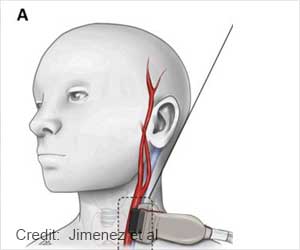Brigham and women's hospital developed a home-based care delivery program to help control blood pressure quickly and at lower costs than office-based blood pressure programs, which reduced BP in 81% of patients.

‘Bluetooth-enabled blood pressure device is an innovative solution to manage hypertension effectively which will thereby reduce the burden of cardiovascular diseases among people.’





"This is a striking result, especially given the very short time frame in which control was reached: an average of seven weeks," said corresponding author Naomi Fisher, MD, director of the Hypertension Service and Hypertension Specialty Clinic at the Brigham. "There are a few notable health care systems that have matched or exceeded this control rate, but most clinical practices do not approach this rate of success." To overcome some of the challenges that clinical practices face, Fisher and colleagues combined several innovative strategies to create their program. Enrolled participants each received a Bluetooth-enabled blood pressure device that could automatically transmit the blood pressure measurements patients took at home into their electronic medical records. Patients had easy and frequent access to "patient navigators"--non-physicians who had been trained to use a clinical algorithm developed by hypertension specialists. The program enabled rapid assessment and medication dosage adjustments for the patients.
The pilot was conducted as a prospective cohort study. The team enrolled 130 patients whose blood pressure was uncontrolled (greater than 140/90 mmHg). Patients were recruited from two clinics to test efficacy in two settings: a Brigham primary care clinic (800 Huntington Ave.), and the Brigham's Watkins Cardiovascular Clinic. All adults were eligible except pregnant women and those with advanced kidney disease. Enrolled patients were given a Bluetooth-enabled blood pressure device and taught how to use it. Patients were instructed to measure their blood pressure at home twice daily in duplicate. Medication adjustments were made every two weeks until home blood pressure was controlled at <135/85 mmHg.
The team's next step will be to scale up the program to test its generalizability and sustainability. With this approach, the team anticipates significant cost effectiveness and cost savings, in addition to the prevention of cardiovascular events and death from treating hypertension more intensively in men and women.
"The time-honored model of treating hypertension via traditional visits to the doctor is neither effective nor sustainable," said Fisher. "Development of innovative solutions to manage hypertension effectively and efficiently, and thus reduce the cardiovascular risk burden in larger populations, is critical. Organizations can and should develop and adopt innovative technologies to create sustainable solutions for the control of hypertension."
Advertisement
Source-Eurekalert















